December 31, 2015
Compatible HP SFP+/QSFP+ transceivers provided by Fiberstore are third-party optical modules certificated to be fully compatible with HP Switch/Router product line. These cost-effective HP transceiver modules are well tested before delivered worldwide. HP compatible SFP+/QSFP+ transceivers have the same functionality with the original which can be equivalent to HP J9150A, HP J9151A, HP J9152A, HP JD092B, HP 455886-B21 and so on. The following passage will mainly talk about compatible HP AJ716A and HP JG661A.
HP Compatible SFP+ Modules—AJ716A
AJ716A is HP compatible 8G SFP+ transceiver module. This enhanced small form-factor pluggable (SFP+) supports bi-directional, serial-optical data transfers across fiber optic networks. The transceiver is equipped with two connectors: a SFP+ male edge connector that plugs into the host system, and a LC connector for the fiber optic cable. This transceiver offers the same function withHP AJ716Aand it is fully compatible with HP devices. Figure 1 shows an overview of HP AJ716A.
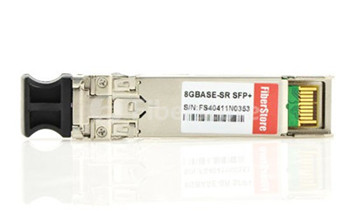
The AJ716A also refers to HP AJ716A 8G LC-SR. This module is designed for multi-mode fiber and operates at a nominal wavelength of 850nm. This HP transceiver supports 8 Gigabit connectivity up to 150 m and makes use of advanced class 1 laser technology to accurately transmit data. The primary application of the HP AJ716A is 8G application over multi-mode fiber. Because it is hot-swappable and MSA compliant, this transceiver can be plugged directly into any HP SFP+ based transceiver port, without the need to power down the host network system. This capability makes moves, adds and changes quick and painless.
HP Compatible QSFP+ Modules—JG661A
JG661A is HPJG661Acompatible QSFP+ transceiver. The Quad Small Form-factor Pluggable (QSFP) optical transceivers have four separate 10G channels to simultaneously operate for supplying 40GbE network and sum up the capacity into a single channel. QSFP modules increase the port-density by 3x-4x compared to SFP+ modules. Figure 2 presents an outlook of HP JG661A for you reference.
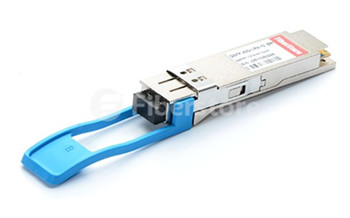
JG661A supports link lengths of 10km on single-mode fiber cable, at a wavelength of 1310nm. It primarily enables high-bandwidth 40G optical links with duplex LC connectors and can also be used in a 4x10G module for interoperability with 10GBASE-LR interfaces. JG661A offered by Fiberstore is guaranteed to be compatible with the equivalent HP optics module. And it is widely used for 40G Ethernet connectivity.
Posted by: angelina at
03:27 AM
| No Comments
| Add Comment
Post contains 530 words, total size 6 kb.
December 29, 2015
Optical fiber transceivers are also called fiber optic transmitter and receiver, which are used to send and receive optical information in a variety of different applications. The role of the optical module is photoelectric conversion. These optical modules are scalable and flexible in their use, and this is why they are preferred by designers. Here is what you need to know about the basics of fiber optic transceivers.

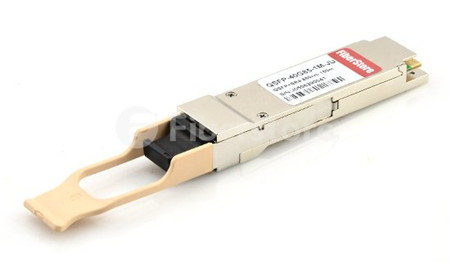
The choice of the devices is determined mainly by speed and fiber compatibility issues. As many premises systems using multi-mode fiber have exceeded bit rates of 1 Gb/s, lasers (mostly VCSELs) have replaced LEDs. Fiber optic transceivers are reliable, but they may malfunction or become out-dated. If an upgrade is necessary, there are hot-swappable fiber optic transceivers. These devices make it easy to replace or repair without powering down the device.
Posted by: angelina at
02:41 AM
| No Comments
| Add Comment
Post contains 615 words, total size 6 kb.
December 28, 2015
UK fiber-optic network services provider CityFibre says it has acquired the national fiber-optic network infrastructure and ductwork of KCOM for $90 million ($136 million). A new funding round of $180 million helped pay for the deal, which the company says will position it to compete with BT's Openreach fiber-optic network services subsidiary.
CityFibre says the acquisition of KCOM's infrastructure (excluding networks in Hull and East Yorkshire) will extend its UK footprint by more than 300%. The physical infrastructure assets comprise 1,100 km of duct and fiber network in 24 UK cities, as well as 1,100 km of national long-distance infrastructure that connects these cities to major data centers across the UK, including Internet peering points in London. The addition of KCOM's assets will increase CityFibre's serviceable metro markets to 36 cities, with a goal of reaching 50 cities by 2020. This would equate to 20% of the UK market, CityFibre asserts.
The deal also will connect CityFibre's network to more than 7,000 mobile cell sites, 24,500 public sector sites, and 245,000 businesses. The company also will strengthen its hand in fiber to the home (FTTH) based broadband service provision, enabling CityFibre to pass 3.5 million homes.
In all, the service provider says the combined infrastructure will put it second behind BT in terms of national reach, making it a viable alternative to Openreach.
CityFibre expects its new financing and the KCOM acquisition to close in the middle of January 2016. The new financing comprises $80 million of new equity and $100 million in debt facilities.
Posted by: angelina at
02:54 AM
| No Comments
| Add Comment
Post contains 263 words, total size 2 kb.
December 24, 2015

Google has bought a defunct semiconductor plant in Clarksville, Tennessee, not far from Nashville, planning to convert it into a data center, state officials announced today.
The company expects to invest $600 million in the project. This will be the eighth Google data center in the US.
Hemlock Semiconductor built the $1.2 billion polysilicon plant in 2013 but did not launch it because of deteriorating market conditions for the material, used to make photovoltaic panels. The site has access to a lot of power and has a lot of infrastructure in place that Google can adapt for data center use.
The company has repurposed a massive paper mill in Finland as a data center and earlier this year announced a plan to turn a defunct coal power plant in Alabama into a Google data center.
The Tennessean reported that Google was in talks to buy the site Monday, when a local county board was expected to vote on whether to sell the property to the internet giant.
The site will be fully powered by renewable energy, Tennessee Department of Economic and Community Development said in a statement. As part of the deal, Google will be able to scout new renewable energy projects and work with the local utility, Tennessee Valley Authority, to bring renewable generation capacity to the grid.
Posted by: angelina at
02:44 AM
| No Comments
| Add Comment
Post contains 228 words, total size 2 kb.
December 23, 2015
Data center regularly went through great migration from 1G, 10G to 40G, 100G over the past few decade. Since IEEE 802.3ba standard defined the 40G Ethernet on June 17, 2010. The newest widely adopted optical transceivers is the QSFP+ that offers aggregated optical speeds of 40G. There are many variants for QSFP+ small from factor including LR4 (10km single-mode), IR4 (2km single-mode) or ESR4 and SR4 for short haul multi-mode. So what are they and what is the difference between them? The following passage will provide a satisfying answer to you.
QSFP optical transceivers have four separate 10G channels to simultaneously operating for supplying 40GbE network and sum up the capacity into a single channel. The following tables shows QSFP40G portfolio, of which 40GBASE-SR4, 40GBASE-LR4 and 40GBASE-ER4 are the most commonly used 40G physical layers.
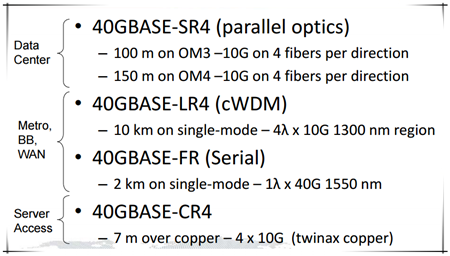
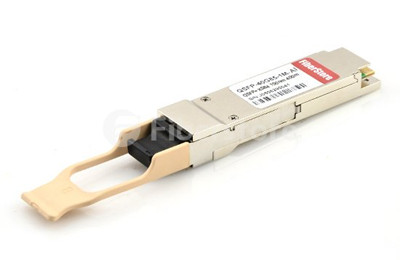
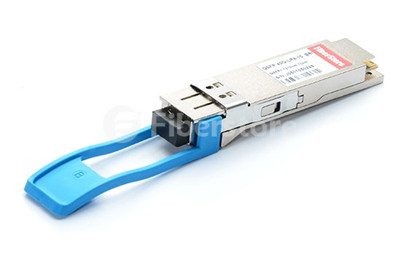
In addition, 40GBASE-LR4 QSFP+ transceivers are most commonly deployed between data-center or IXP sites with single mode fiber. 40GBASE-SR4 QSFP+ transceivers are used in data centers to interconnect two Ethernet switches with 12 lane ribbon OM3/OM4 cables. And from the above figure, we can know that they support different transmission distance in different wavelengths and with different connectors.
Posted by: angelina at
02:42 AM
| No Comments
| Add Comment
Post contains 529 words, total size 6 kb.
December 18, 2015
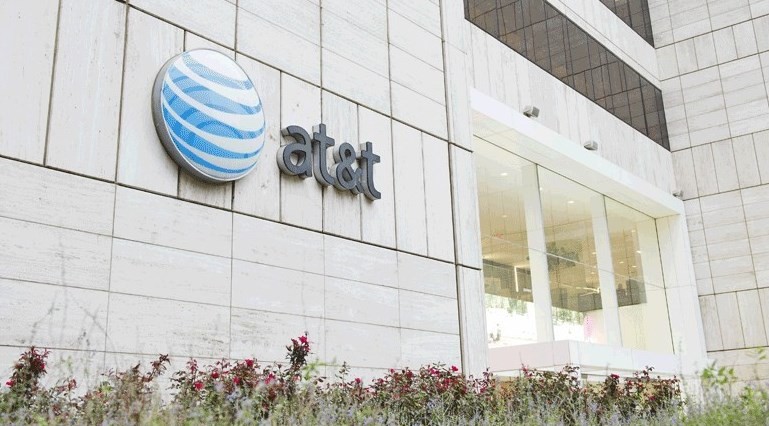
AT&T says it plans to expand the markets for its gigabit broadband AT&T GigaPower service to at least parts of 38 new metro markets. The expansion of its fiber to the premises (FTTP) footprint will bring the number of metro markets where it offers the service to 56.
The company announced that two of the new markets, Los Angeles, CA, and West Palm Beach, FL, have seen services launched.
AT&T will offer the high-speed Internet service with video services through either its DirecTV acquisition or its U-verse service. In markets where both options are available, customers will be given their choice.
AT&T asserts it has deployed its GigaPower network to more than 1 million locations and expects to more than double availability by the end of 2016. The company says it plans to reach more than 14 million residential and commercial locations with the FTTP infrastructure.
In addition to the potential competition from Google Fiber in some of the new metros, AT&T will face a challenge from Comcast's 2-Gbps Gigabit Pro in Fresno, Oakland, Sacramento, San Francisco, and San Jose, CA; West Palm Beach, FL; Indianapolis, IN; and Detroit. A local provider in Detroit, Rocket Fiber, has announced a 10-Gbps FTTP service in that city as well (see "Rocket Fiber to bring 10-Gbps FTTP to Detroit").
Posted by: angelina at
09:14 AM
| No Comments
| Add Comment
Post contains 224 words, total size 2 kb.
Small form factor pluggable, usually known as SFP modules, are hot swappable Gigabit Ethernet optical transceivers. It offers high-speed performance in a compact package and connects a single network device to a wide variety of fiber cable distances and types. The widely used brand SFP transceivers are from Cisco, Finisar, and HP, etc. But third-party SFP modules have also been widely used by subscribers for the low cost and high-quality. Today, some compatible Finisar SFP transceiver modules from Fiberstore will be introduced in this passage.
Original Finisar SFP Transceiver Modules
Subscribers may feel worried about the quality of the third-party SFP modules, they are willing to pay a large amount of money to purchase the original products for their optical equipment. Then let us compare the original SFP modules with third-party SFP modules. In the end of this text, you may get the answer.
Finisar’s original products are announced to be fully compliant with Ethernet, Fibre Channel, Infiniband, SONET/SDH/OTN, CPRI and PON standards and operate at data rates in excess of 100 Gb/s. They are capable of distances ranging from very short reach within a data center to campus, access, metro, and long-haul reaches. They feature outstanding performance over extended voltage and temperature ranges, while minimizing jitter, electromagnetic interference (EMI) and power dissipation. Take Finisar FTRJ8519P1BNL as an example, it is compatible 1000BASE-SX SFP transceiver. We all know that SFP modules are commonly available in four different categories: 850nm (SX), 1310nm (LX), 1550nm (ZX), and WDM (wavelength-division multiplexing). That means this module operates on 850nm Wavelength. You can check it from the following data.
The main features of FTRJ8519P1BNL:
- Hot-pluggable SFP transceiver module
- Up to 2.125 Gb/s bi-directional data links
- 1000BASE-SX Gigabit Ethernet
- 2Gb/s Fibre Channel Short Wave
- Multimode Fiber (MMF)
- 850nm Wavelength
- Up to 550m Reach
- Duplex LC Connector
This transceiver can be applied in Gigabit Ethernet Switches and Routers, Fiber Channel Switch Infrastructure and other optical links, as Finisar has announced.
Compatible Finisar SFP Transceiver Modules
This transceiver modules are compatible with the small form factor pluggable Multi-Sourcing Agreement (MSA). Finisar FTLF8519P3BNL is compatible 2G Fibre Channel (2GFC) and it is fully compatible with Finisar devices. From the above picture, we can see no difference between the Original one and the third-party SFP.
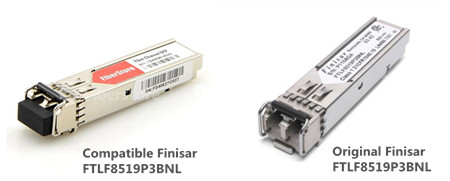
When you are planning to upgrade your network, it makes sense to cut budget. Third-party SFP optical transceivers usually cost far less than the original units, especially in the case of Cisco, but can provide the exact same performance you expect. Just find a reliable vendor like Fiberstore, it will solve all your problems.
Summary
If you are wondering about you limited money for deploying your network, finding reliable OEM vendor is your best choice. Compatible Finisar SFP modules are the most cost-effective and 100% tested before delivered worldwide. We provides a series of compatible Finisar SFP transceivers that can be equivalent to FTLF8519P2BNL, FTLF8524P2BNV, FTRJ8519P1BNL, FTLF8524P2BNL, FTRJ1319P1BTL, etc.
Posted by: angelina at
04:14 AM
| No Comments
| Add Comment
Post contains 491 words, total size 5 kb.
December 16, 2015
Nowadays, 10Gbps links for individual streams cannot satisfy subscribers’ requirements for higher-bandwidth data transmission. Increasing networking applications are driving 40GbE to ensure better performance. 40G QSFP+ transceiver has proved itself as an ideal solution for supporting 40 Gigabit Ethernet. There are so many 40G transceivers in the market, of which HP transceivers are the most commonly used transceivers. The following passage will introduce 40GbE transceiver modules and HP QSFP+ active optical cable in details.
Shedding Light on 40G QSFP+ Modules
The 40G QSFP+ module is a compact, hot-pluggable transceiver used for data communications applications. It supports Serial Attached SCSI, 40G Ethernet, QDR (40G) and FDR (56G) Infiniband and other communications standards. Compared with SFP+ modules, QSFP+ transceiver increases the port-density of 3-4 times. Take HP QSFP+ transceivers an example, compatible HP721067-B21(see in Figure 1) transceiver modules are very suitable for short distances and offer a very cost-effective way to establish a 40-gigabit link between QSFP port and SFP+ port of HP switches within racks and across adjacent racks.
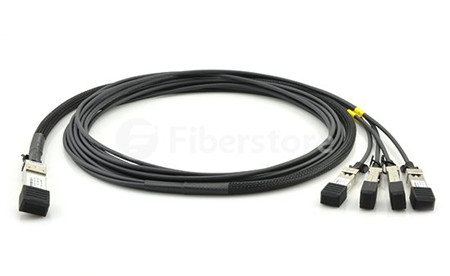
What Are Features of 40G QSFP+ Modules?
- Hot-pluggable input/output device that plugs into a 40 Gigabit Ethernet QSFP port
- High-speed electrical interface compliant to the IEEE 802.3ba standard
- Certified and tested on QSFP 40G ports for superior performance, quality, and reliability
- Digital Diagnostics Monitoring Interface
What’s more, QSFP+ modules provide 40Gb/s Ethernet data rates over MMF (Multi-Mode Fiber) optic cable and SMF (Single-Mode Fiber) optic cable. QSFP+ modules take up very little space on a switch or server interface, allowing vendors to provide multiple QSFP+ ports in the same space.
HP 40GbE Optical Devices
HP offers a variety of 40GbE optical devices, such as QSFP to Four SFP+ copper breakout cables, QSFP+ transceivers, QSFP to Four SFP+ active optical breakout cables, QSFP to QSFP active optical cables, etc. Each has its unique characteristics. Let’s take720208-B21(QSFP+ to QSFP+ Active Optical Cable) for an example, image below gives you a vivid impression of QSFP+ to QSFP+ Active Optical Cable.
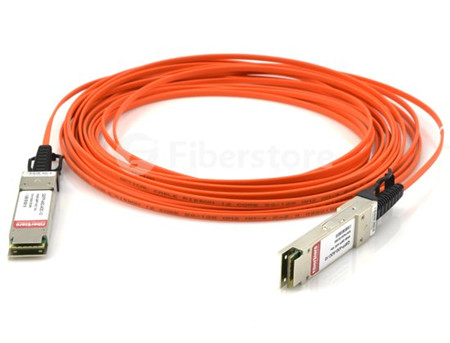
HP QSFP+ to QSFP+ active optical cables are suitable for 40G Ethernet. And there are two common active optical cables available in the market—QSFP to 4 SFP+ breakout AOC and QSFP to QSFP AOC. QSFP to 4 SFP+ breakout AOC is a 4×10 Gb/s parallel active optical cable that transmits four separate streams of 10 Gb/s data over ribbon cables in a point-to-multipoint configuration. This cable contains a QSFP+ module on one end and four separate SFP+ modules at the other ends. The latter is a 40 Gb/s parallel active optical cable which transmits error-free parallel 4×10 Gb/s data over multi-mode fiber (MMF) ribbon cables.
Posted by: angelina at
05:11 AM
| No Comments
| Add Comment
Post contains 436 words, total size 4 kb.
December 14, 2015
As organizations transition to 10 Gigabit Ethernet technology, network designers must select the best optical devices for supporting this Ethernet. 10G transceiver modules has experienced the development from XENPAK, X2, XFP and finally realized with SFP+. Today’s article discusses the emergence of 10 Gigabit Ethernet, and why it is the time to moving to 10GbE. The most recently adopted modules, called small form-factor pluggable plus (SFP+), will be explained and how it further enhances the 10GbE reliability.
After spending nearly a decade building out their 1GbE networks, enterprise have been reluctant to overhaul the resources invested in the network, including adapters, controllers and other devices, and—perhaps most of all—cabling. But as virtualization and cloud operations become core technology components, they are bringing with them changing network requirements, key to which is that the minimum for an advanced dynamic architectures is now 10GbE. On the market, there are a variety of optical devices to support 10GbE including processors, servers, adapters, switches, and cables. The following part will explain the most commonly used transceiver modules—SFP+ in detailed.
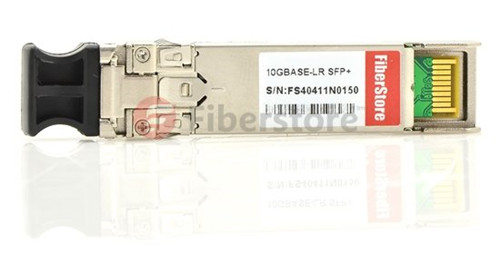
- Flexibility
The SFP+ standard builds on a previous one—the SFP MSA (primarily a 1Gb standard). SFP+ modules are the same physical size as SFPs and the SFP+ standard allows either type of module to operate in the new SFP+ slots.
- Small Size
SFP+ modules are one tenth the size of the original XENPAK 10G modules (see Figure 1) and are the same size as the popular 1Gbps SFP modules. This small size allows the design of systems with 10G ports of the same density as previous generations with 1G ports.
- Low Cost
Since SFP+ modules share many components (bezel, housing, latch/locking mechanism) on the previous SFP standard, the cost of the 10G modules inherits the low cost of these components. SFP+ units are also lower power, contributing to cost savings.
Posted by: angelina at
09:12 AM
| No Comments
| Add Comment
Post contains 612 words, total size 6 kb.
December 09, 2015
40 Gigabit Ethernet is a new generation of high-speed, high-demand, computing technologies. The market driver for 40/100 Gigabit Ethernet is becoming inescapably compelling. In order to handling this, new optical technology and cabling infrastructure are required. This article addresses the impending move to 40 Gigabit Ethernet and 40 Gigabit optical transceiver modules.
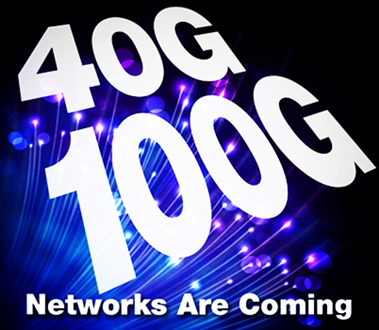
40 Gigabit Ethernet and 100 Gigabit Ethernet are groups of computing networking technology defined by the IEEE 802.3ba standard to support sending Ethernet frames at 40 and 100 gigabits per second. Official development of the 40 Gigabit Ethernet and 100 Gigabit Ethernet standards began in January 2008, and the standards were officially ratified in June 2010. They also address physical layer specifications for communication across backplanes, copper cabling, multi-mode fiber, and single-mode fiber.
The heart of the 40 Gigabit Ethernet network layer is a pair of transceivers. These transceivers, in turn, are plugged into either network servers or a variety of components including interface cards and switches. There are commonly three types of 40GbE transceiver modules, namely QSFP+, CXP and CFP. Today, we are going to focus on QSFP+ transceiver modules.
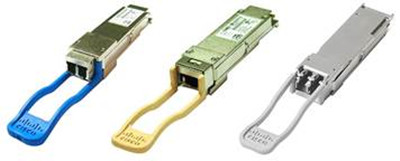
-
40GBASE-LR4 QSFP+
40GBASE-LR4 transceiver supports a link lengths of up to 10km over 1310nm single-mode fiber with LC connector, which is most commonly deployed between data center or IXP sites. TakeQSFP-40GE-LR4as an example, it is fully compatible with Cisco 40GBASE-LR4 QSFP+ Transceiver. It primarily enables high-bandwidth 40G optical links and can also be used in a 4x10G module for interoperability with 10GBASE-LR interfaces.
-
40GBASE-SR4 QSFP+
40GBASE-SR4 transceiver supports a link lengths of up to 100 meters on OM3 and 150m on OM4 over 850nm multi-mode fiber, MPO Connector. 40GBASE-SR transceivers are mainly used in data center to interconnect two Ethernet switches with 8 fiber parallel multi-mode fiber OM3/OM4 cables. Take a look at theJG325A(see in Figure 3), it is provided at Fiberstore with high-quality and low cost.
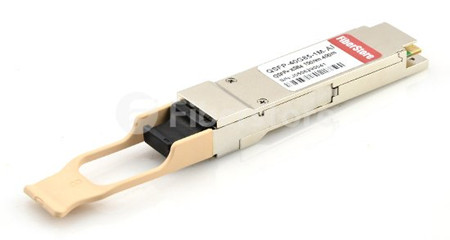
-
40GBASE-LR4 PSM QSFP+
40G LR4 Parallel Single Mode (PSM) transceivers support up to 10 kilometers over single-mode fiber using an 8 parallel fiber MPO interface. Each fiber pair can be broken out to a 10Gb Ethernet connection, compatible with up to four 10GBASE-LR interfaces.
Posted by: angelina at
03:19 AM
| No Comments
| Add Comment
Post contains 627 words, total size 8 kb.
December 08, 2015
Think of a shed and objects like spades, forks and compost in a wooden hut at the end of the garden come to mind.
However, in the UK, some very old hardware is being brought back to life in some of those scruffy, but often well-organised, workspaces. In them, a group of veteran engineers is toiling to help recreate the pioneering Edsac computer.
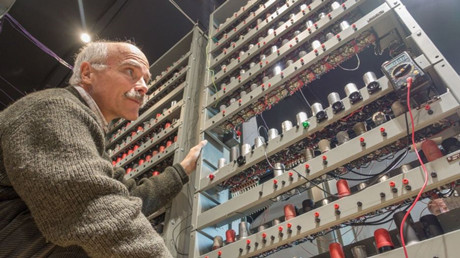
Designed by Sir Maurice Wilkes, Edsac first ran in 1949 and was made to serve scientists at the University of Cambridge. It helped them push the boundaries of their disciplines by giving them a tool that could crunch numbers faster than they could ever manage. "The problems they were tackling were not practical using hand-based calculation methods," said James Barr, one of the veterans reconstructing the Electronic Delay Storage Automatic Calculator. Edsac quickly proved its usefulness and helped two Cambridge scientists win Nobel prizes. Instruction set
But while the science was meticulously recorded, the building of Edsac was not. "Wilkes was exposed to electronics and valves during his wartime work on radar and to the mercury delay lines it used for memory," said Mr Barr. "He had the technology in his head that he thought he could realise." Wilkes' design for Edsac have been largely lost and, even if they could be found, that might not have helped because the machine changed as it was being built.
"It took me a year to understand its five-bit order code," said Mr Barr. But understand it he did and his insights, along with those from fellow engineers who have worked on other key parts of the machine, has helped the project recreate Edsac's innards.
Posted by: angelina at
08:39 AM
| No Comments
| Add Comment
Post contains 443 words, total size 4 kb.
December 04, 2015
The widely acknowledged Ethernet speed upgrade path was 10G-40G-100G. However, a new development indicates the latest path for server connection will be 10G-25G-100G with potential for future upgrading to 400G. But why 25G? Because moving from 10G to 40G is a big jump and it turns out the incremental cost of 25G silicon over 10G is not that great. This new standard will require improved cables and transceiver modules capable of handling this additional bandwidth, under this circumstance, QSFP28 and SFP28 are promoted.
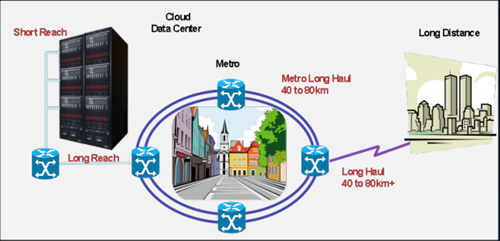
The proposed 25GbE standard delivers 2.5 times more performance per SerDes lane using twinax copper wire than that available over existing 10G and 40G connections. A 50GbE link using two switch/NIC SerDes lanes running at 25 Gb/s each delivers 25% more bandwidth than a 40GbE link while needing just half the number (four) of twinax copper pairs. Therefore, a 25GbE link using a single switch/NIC SerDes lane provides 2.5 times the bandwidth of a 10GbE link over the same number of twinax copper pairs are used in today’s SFP+ direct-attach copper (DAC) cables.
Perhaps the most important benefit of 25GbE technology to data-center operators is maximizing bandwidth and port density within the space constraints of a small 1U front panel. It also leverages single-lane 25Gb/s physical layer technology developed to support 100GbE.
The QSFP28 (25G Quad Small Form-Factor Pluggable) transceiver and interconnect cable is a high-density, high-speed product soluon designed for applicaons in the telecommunicaons, data center and networking markets. The interconnect offers four channels of high-speed signals with data rates ranging from 25 Gbps up to potentially 40 Gbps, and will meet 100 Gbps Ethernet (4x25 Gbps) and 100 Gbps 4X InfiniBand Enhanced Data Rate (EDR) requirements.
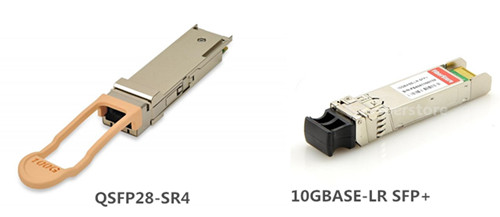
The demonstration showed QSFP28-SR4 modules and a compatibleFinisar FTLX1471D3BCL10GBASE-LR SFP+. The QSFP28 SR4 module is a vertically integrated solution that meets IEEE 802.3 standards and MSA requirements with power dissipation well under 3.5W. The module supports both 100GBASE-SR4 as well as 4x25G breakout applications. Both the QSFP28 SR4 and SFP28-SR modules are sampling now.
Posted by: angelina at
06:54 AM
| No Comments
| Add Comment
Post contains 666 words, total size 7 kb.
December 03, 2015
PARIS — Microsoft co-founder and philanthropist Bill Gates unveiled plans Monday by an international coalition to invest billions of dollars in clean-energy projects to combat global warming. Gates unveiled the initiative on the opening day of the two-week summit on climate talks alongside President Obama, French President Fran?ois Hollande and Indian Prime Minister Narendra Modi.
Among the 20 countries that agreed to participate in the program called Mission Innovation are France, the United States, India, South Korea, Saudi Arabia, Australia, Canada and Norway. Joining them will be a group of 28 international investors, including Marc Benioff, chairman and chief executive of Salesforce.com; Virgin Group founder Richard Branson; and Prince Alwaleed bin Talal of Saudi Arabia.
The countries pledged to double investment in low or no-carbon energy research. At the same time, Gates said investors will support companies that bring innovative clean-energy ideas to the marketplace. That alliance will be called the Breakthrough Energy Coalition. The project will focus on technologies that permit better use of clean energy from wind and solar, even when there's no wind or sunshine.
The 20 participating nations represent more than 80% of global funds spent on clean-energy innovation. The United States now generates 20 times as much solar power as it did in 2008, and the solar industry is adding jobs more than 10 times faster than the rest of the economy, according to the White House. In brief remarks here, Obama emphasized the need to help emerging economies "skip the dirty phase of development."
"The leap forward is going to take private sector efforts," he added. "If we put our best minds behind it and we have the dollars behind it, we will discover what works," the president said. Gates, whose personal fortune is estimated by Forbes at about $80 billion, said during the summer that he would invest about $1 billion over the next five years to clean-energy projects. In Paris, he said investors have committed about $2 billion so far to the initiative.
"We need to be exploring many different paths — and that means we also need to invent new approaches," Gates wrote in a blog post announcing the project. "Private companies will ultimately develop these energy breakthroughs, but their work will rely on the kind of basic research that only governments can fund. Both have a role to play." Andrew Steer, president and chief executive of World Resources Institute, a climate research group, said the Gates announcement gives a major boost to the climate talks.
"This unprecedented partnership will unleash significant funds for clean tech, and prompt innovation to deliver clean, affordable energy to billions of people," Steer said. "India’s leading role in this initiative is particularly noteworthy," he added. "Prime Minister Modi stands alongside other leaders of emerging economies in demonstrating how international cooperation can spur clean-energy access and advance economic development.â€
In previous climate negotiations, developing countries such as India complained they should not be asked to reduce greenhouse gas emissions as steeply as developed countries such as the United States and the United Kingdom, which are responsible for the majority of historic emissions. Countries such as India rely on fossil fuels to expand their economies.
India launched a separate initiative Monday called the Solar Alliance, comprised of more than 100 countries that are solar-rich and lie between the Tropics of Cancer and Capricorn.
"India is a very nature-loving country and we are setting out, as always, to protect nature in the world," Modi said, discussing the Solar Alliance with Obama in Paris. "And as you know, (former Indian leader) Mahatma Gandhi was the biggest champion of nature. And we are going to be making a very important contribution."
Posted by: angelina at
01:52 AM
| No Comments
| Add Comment
Post contains 622 words, total size 5 kb.
32 queries taking 0.0981 seconds, 101 records returned.
Powered by Minx 1.1.6c-pink.









